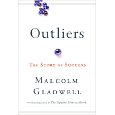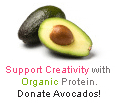Understanding Autoimmune Diseases
17 Comments

Photo: Lynn Kasztanovics
As part of my research on vegetarian diet, I recently dove into the fascinating book “The China Study“. It was written by Dr. Campbell, a researcher who has spent the past 30 years studying the effects of animal proteins on health.
In addition to simply presenting the numerous studies by various researchers in a meaningful way, the book does a great job of explaining the most common dangerous diseases, in layman’s terms. I finally have a basic grasp of the workings behind cancer, diabetes, heart disease, and the various autoimmune diseases.
I believe that the best way to understand and retain something new is by teaching it. Here is my stab at explaining the basics of these diseases using very simple terms.
I hope this can be helpful to you in gaining some clarity around these health topics that are foreign to most of us. Through understanding, we can appreciate the intricate workings and intelligence of our bodies; thus empowering ourselves to make better, more conscious and responsible lifestyle choices.
Let’s start with autoimmune disease.
Background
I find autoimmune disease to be the most disturbing amongst the other diseases discussed; particularly, due to its insidious nature of self-attacking, and the lack of treatment options. About 3% of Americans have an autoimmune disease, estimating a total of 8.5 million people.
Multiple sclerosis (MS) is one of the high profile autoimmune diseases that caries with it devastating results. “It is a lifelong battle involving a variety of unpredictable and serious disabilities. MS patients often pass through episodes of acute attacks while gradually losing their ability to walk or to see. After ten to fifteen years, they often are confined to a wheelchair, and then to a bed for the rest of their lives.”
Other well studied autoimmune diseases include Type 1 diabetes, lupus and rheumatoid arthritis. All in all there are forty varying types in this disease group. Regardless of name, they all share a common behavior in which the immune system attacks our body’s own cells, causing destruction to our body’s integrity.
Basic Workings of Our Immune System
Our immune system is not an organ, but a series of cells and processes working together to fight off foreign cells in our blood stream. The individual soldiers in this battle against foreign invaders are the white blood cells. There are various types of white blood cells, each with its own specialization.
Our bone marrow is like the main recruiting center for soldiers. It is in the marrow of bones where stem cells are made. Some of these cells get released directly into the body for use. These are called B-Cells. Some of these cells travel to the thymus (organ in our chest) before getting finalized into T-Cells.
The foreign invaders in our body are called Antigen, they are protein molecules which can be a virus or a bacteria that is potentially corruptive to our body. Each antigen has a unique identity based on the sequence of amino acids which makes up the protein. Their identities are comparable to difference faces on people.
When a foreign invader is detected, these white blood cells team up into groups to create a customized defense against the invader. They do so by creating a protein that mirrors the shape of the invader (antigen), such that it fits perfectly onto the antigen and destroys it in a “kiss of death”.
Each time a new antigen is encountered, a new mold is created. The molds are then re-used for future captures of antigens of the same type. Names for some molds are B-cell antibodies and T-cell-based receptor proteins. Fancy!
Subsequent attacks on antigens with existing molds mean that they can be destroyed faster and less painful. This is the basis for Immunization: introducing a tiny dose of a foreign virus, so our body will create the appropriate molds and will know how to deal with them next time.
Autoimmune Diseases: Military Gone Crazy
Problems happen when our soldiers cannot distinguish between invader proteins from our body’s own proteins. Molecular mimicry is when invader cells look the same as our own cells. Meaning, molds created to attack the invader cell will also fit into our own cells.
The actual cause of confusion is still unknown, and the process is extremely complex. Scientists believe the antigens that trick our body into attacking our own cells may be found in food. Here is one possibility:
- Digestion after eating food
- Some proteins are not broken down into amino acid parts
- Slips into blood stream from intestine
- Treated as foreign invaders by white blood cells
- Molds created to destroy them
- Starts into motion the self-destructive process
Cow’s milk is one of such food which supplies several foreign proteins that mimic the proteins found in our bodies.
Normally, our body is smart enough to distinguish which cells are foreign, even if they look similar. Sort of like the soldiers having safe guards against friendly fire. The way that this system breaks down is still not understood. However, many studies have shown that a “western diet” (high animal protein, cholesterol, refined carbohydrates) is strongly associated with disease incidence.
What we do know is that this self-destructive process is common to all autoimmune diseases.
- Type-1 Diabetes – Immune system attacks the pancreas used to create insulin in our body. Insulin is used to redirect glucose (blood sugar) to other parts of body. As a result, the body has an overflow of blood sugar.
- Multiple Sclerosis (MS) – Immune system attacks the myelin sheath used to insulate nerve fibers which connects our central and peripheral nervous system to the rest of our body. As a result, the electrical signals “short-circuit”, and the messages/commands will not be properly carried from our brain to various body parts; thus gradual loss of control over our body.
- Arthritis – Immune system attacks the joint tissues.
Based on reputable research studies in relation to nutrition, the consumption of animal-based foods, especially cow’s milk is associated with greater risk of autoimmune diseases. This is especially apparent and well-documented in Type-1 Diabetes, a devastating disease found in children. Here’s a quote from the result of one study, “All of the diabetic children had levels of cow’s milk antibodies that were higher than those of all the non-diabetic children.” (read more on page 187 of China Study).
I find it deeply troubling to learn that something we’ve socially believed to have been an essential staple for “good health and strong bones” may cause one of the most devastating diseases a child can develop.
What are your thoughts on the topic? Have any disturbing health or food facts you want to share with us?
********************************************************
Related Links:
- Book: The China Study: The Most Comprehensive Study of Nutrition Ever Conducted and the Startling Implications for Diet, Weight Loss and Long-term Health
- TSN: Articles on Health at Think Simple Now
- Book: The Food Revolution: How Your Diet Can Help Save Your Life and Our World
- Wikipedia: Autoimmunity
- Browse in Timeline:
- « Thirty Saturdays: Lifestyle Update
- » Photo Showcase: Jacqueline Veissid


















John Hollandsworth, M.D.
Sep 08 08, 5:16 pm
PeaceLoveJoyBliss
Sep 08 08, 5:47 pm
Shana Albert - TheNanny612
Sep 08 08, 5:59 pm
Christoffer
Sep 09 08, 12:33 am
natalie b
Sep 09 08, 10:35 am
Nathalie Lussier from Billionaire Woman
Sep 09 08, 11:31 am
Wendi Kelly-Life's Little Inspirations
Sep 11 08, 6:37 am
Terra
Sep 11 08, 9:58 pm
Kris
Sep 18 08, 9:30 am
hayley
Sep 27 08, 2:25 pm
Sarah
Oct 07 08, 8:15 pm
Sandy Guerriere
Oct 17 08, 7:08 pm
Weight Loss Blog
Dec 15 08, 3:08 pm
Chee
Jan 10 09, 4:51 pm
Larry Nomer
Mar 18 12, 3:39 pm